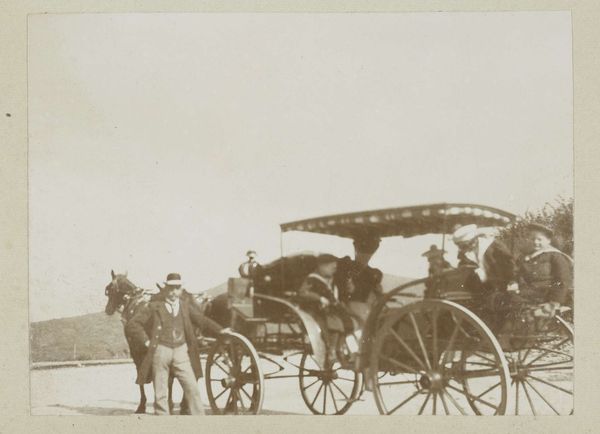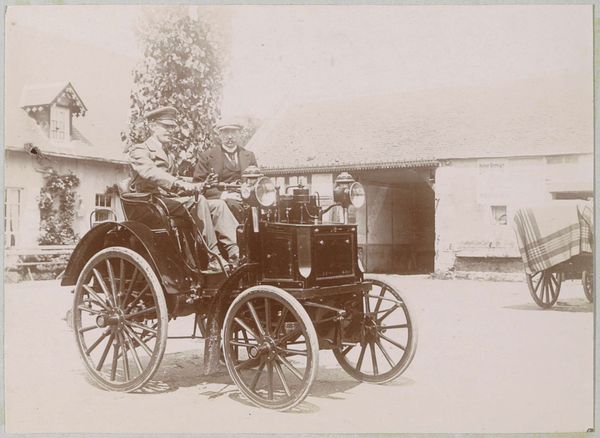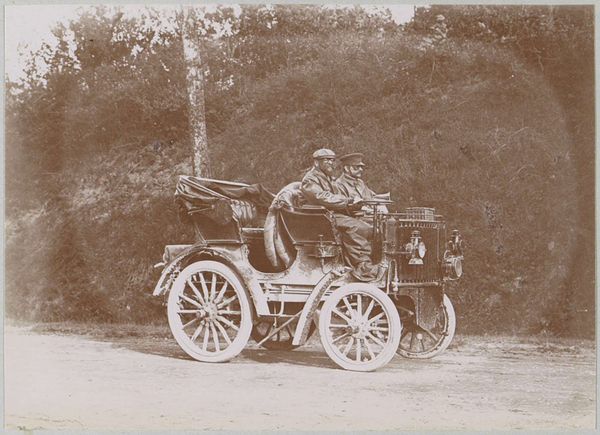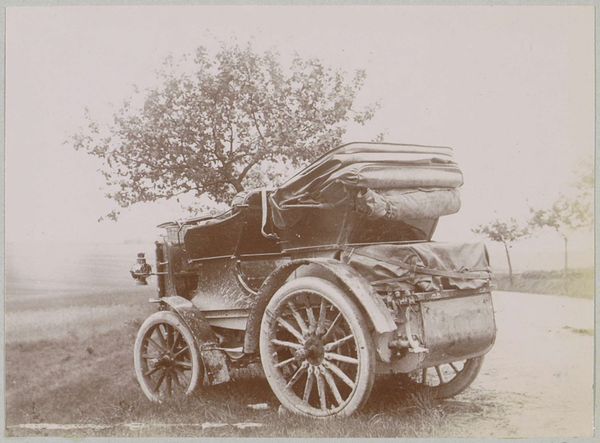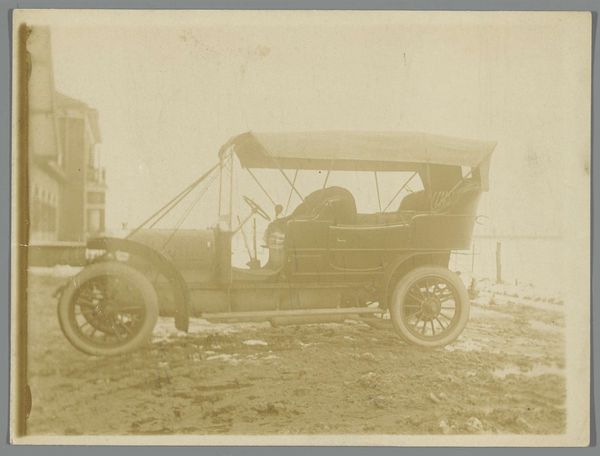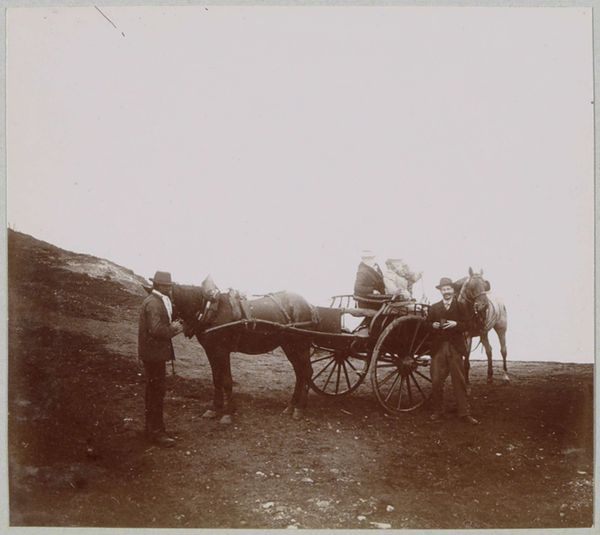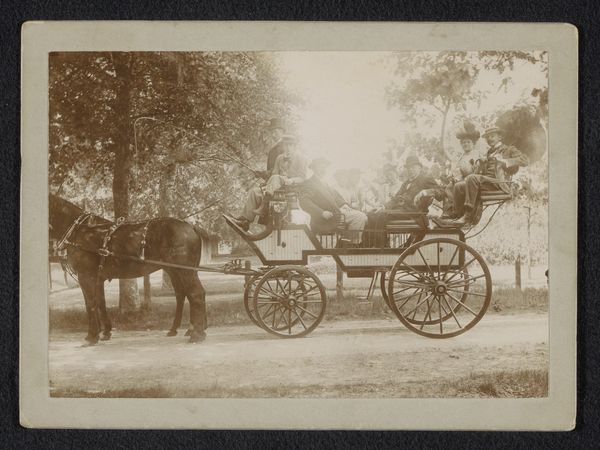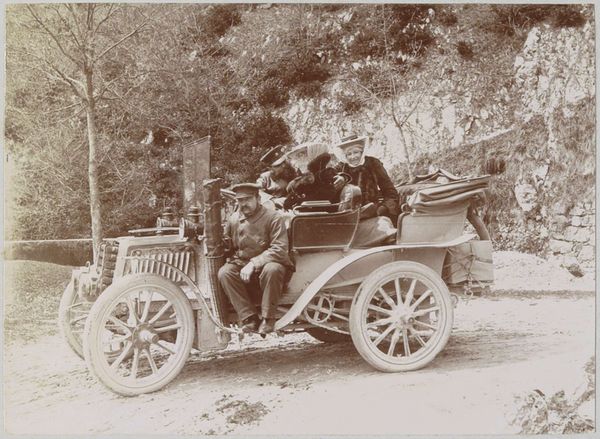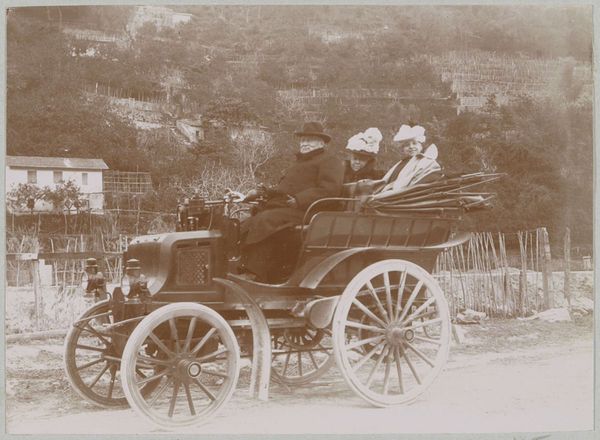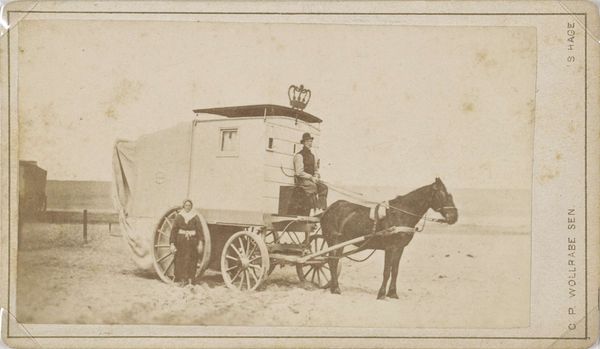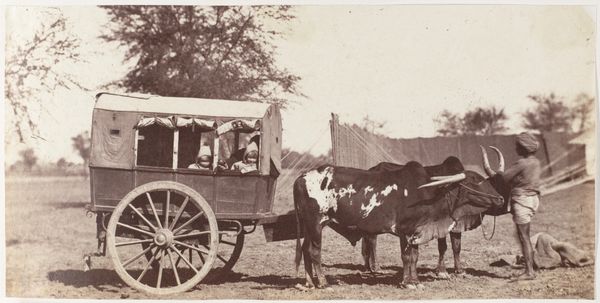
Gezelschap bij twee automobielen in Frankrijk, waarschijnlijk tijdens een race voor Mors-automobielen 1898
0:00
0:00
delizy
Rijksmuseum
photography, albumen-print
#
portrait
#
landscape
#
photography
#
group-portraits
#
orientalism
#
history-painting
#
albumen-print
Dimensions: height 79 mm, width 109 mm
Copyright: Rijks Museum: Open Domain
Editor: We're looking at a vintage photograph, "Gezelschap bij twee automobielen in Frankrijk, waarschijnlijk tijdens een race voor Mors-automobielen," taken around 1898. It's an albumen print from the Rijksmuseum collection, portraying two early automobiles and a group of people. I'm struck by the contrast between the mechanical forms and the organic backdrop of trees. What do you make of its composition? Curator: Structurally, the photograph employs a relatively shallow depth of field, focusing our attention on the vehicles and figures while softening the background. Note the placement of the automobiles, arranged almost as if in a formal portrait. The lines of the road subtly draw the eye towards the background but the tonal range of the albumen print lends a unified surface quality, where the darker browns are evenly distributed to anchor the image. Editor: So, the arrangement itself, the choice of what to put where, is key to its meaning? Curator: Precisely. Observe how the circularity of the wheels is echoed in the curves of the carriage body, suggesting a formal dialogue between design elements. Moreover, the arrangement of figures invites an interplay of gazes; are they admiring the machines, posing for the camera, or simply conversing? The question is left visually unanswered. How does this photograph reflect the shift towards modernity? Editor: I see what you mean; it's like the dawn of a new era frozen in a very deliberate pose. The composition guides my eye, allowing me to almost hear the engines. I hadn't considered how much the form contributed to that feeling! Curator: Indeed. It reveals that the composition and treatment of tone gives a sense of that very moment that the industrial age emerges. It's an interesting effect, almost poetic.
Comments
No comments
Be the first to comment and join the conversation on the ultimate creative platform.
